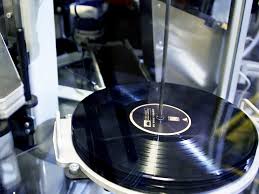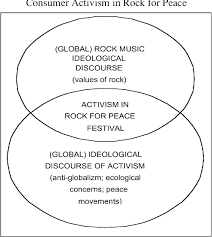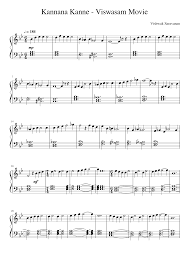The Art of Vinyl Record Pressing
Vinyl record pressing is a craft that has stood the test of time, enduring changes in technology and music consumption trends. While digital formats have become dominant in the music industry, the allure of vinyl records remains strong for audiophiles and collectors alike.
At its core, vinyl record pressing is a meticulous process that involves transforming music into physical form. It starts with mastering the audio tracks to ensure optimal sound quality. The mastered tracks are then used to create a stamper, which will be used to press the grooves onto the vinyl disc.
The vinyl pressing process requires precision and attention to detail. The vinyl pellets are heated and pressed between two stampers to create the final record. The result is a tangible piece of art that not only carries the music but also the visual appeal of album artwork.
One of the unique aspects of vinyl record pressing is its physicality. The act of placing a record on a turntable, carefully dropping the needle onto the groove, and hearing the warm sound fill the room creates an immersive listening experience that digital formats struggle to replicate.
Despite its time-consuming nature and higher production costs compared to digital formats, vinyl record pressing continues to thrive. Many artists and labels see vinyl as a way to connect with fans on a deeper level and offer them a tangible piece of their music.
For collectors, vinyl records hold sentimental value and are often seen as pieces of art in their own right. The resurgence of interest in vinyl has led to a growing market for limited edition pressings, coloured vinyl variants, and deluxe packaging options.
In an age where convenience often trumps quality, vinyl record pressing stands as a testament to the enduring appeal of physical media and the artistry behind music production. Whether you’re a seasoned collector or new to the world of vinyl, there’s something special about holding a record in your hands and experiencing music in its purest form.
Exploring the Timeless Appeal of Vinyl: 9 Reasons to Embrace Record Pressing
- Superior sound quality with warm, rich tones
- Tactile experience of handling physical records
- Artistic value of album artwork and packaging
- Collectible nature of limited edition pressings
- Immersion in the music through dedicated listening sessions
- Resurgence of interest in vinyl as a retro trend
- Support for artists and independent record labels
- Longevity of vinyl records compared to digital formats
- Unique charm and nostalgia associated with vinyl
Challenges of Vinyl Record Pressing: Costs, Capacity, Durability, and Storage
- Higher production costs compared to digital formats
- Limited capacity leading to longer lead times for pressing
- Susceptibility to wear and tear over time affecting sound quality
- Storage requirements due to size and fragility of vinyl records
Superior sound quality with warm, rich tones
Vinyl record pressing offers a distinct advantage in the realm of sound quality, providing listeners with a superior audio experience characterised by warm, rich tones. The analogue nature of vinyl records allows for a more natural and dynamic sound reproduction compared to digital formats. The physical grooves on the vinyl disc capture nuances and subtleties in the music that can be lost in digital compression, resulting in a more immersive and authentic listening experience. The warmth and depth of sound that vinyl records deliver create a unique sonic atmosphere that resonates with audiophiles and music enthusiasts seeking a true connection to the music they love.
Tactile experience of handling physical records
The tactile experience of handling physical records is a unique and cherished aspect of vinyl record pressing. Unlike digital formats that exist solely in the virtual realm, vinyl records offer a tangible connection to the music. The act of carefully removing a record from its sleeve, placing it on a turntable, and gently lowering the needle onto the groove creates a sense of anticipation and engagement that enhances the listening experience. The physicality of vinyl records adds an extra layer of enjoyment for music enthusiasts, allowing them to interact with their music collection in a way that digital files simply cannot replicate.
Artistic value of album artwork and packaging
Vinyl record pressing offers a unique pro in its artistic value of album artwork and packaging. Unlike digital formats where album covers are reduced to thumbnail images, vinyl records provide a canvas for intricate and visually stunning artwork. The larger size of vinyl sleeves allows artists to express their creativity through detailed designs, illustrations, and photography that complement the music within. The tactile experience of holding a vinyl record with its carefully crafted packaging adds an extra layer of appreciation for the music, making it a truly immersive and multi-sensory experience for listeners and collectors alike.
Collectible nature of limited edition pressings
The collectible nature of limited edition pressings is a captivating aspect of vinyl record pressing. These unique releases offer music enthusiasts the opportunity to own a piece of music history that is both rare and exclusive. Limited edition pressings often feature special artwork, coloured vinyl variants, or bonus content, making them highly sought after by collectors. The scarcity of these editions adds a sense of value and prestige to each record, turning them into coveted treasures for those passionate about music and vinyl culture. The thrill of hunting down and acquiring a limited edition pressing adds an exciting element to the vinyl collecting experience, making each record a prized possession in any collection.
Immersion in the music through dedicated listening sessions
One of the key benefits of vinyl record pressing is the opportunity it provides for listeners to immerse themselves fully in the music through dedicated listening sessions. Unlike digital formats that offer quick and convenient access to music, playing a vinyl record requires a deliberate and tactile engagement. The act of carefully selecting a record, placing it on the turntable, and savouring each track creates a ritualistic experience that encourages focused listening. This intentional approach allows listeners to appreciate the nuances of the music, feel the warmth of analog sound, and truly connect with the artist’s work on a deeper level. Vinyl record pressing fosters a sense of mindfulness and appreciation for music that is often lost in today’s fast-paced digital age.
Resurgence of interest in vinyl as a retro trend
The resurgence of interest in vinyl as a retro trend is a testament to the enduring appeal of physical music formats in an increasingly digital age. As music enthusiasts and collectors rediscover the tactile experience of vinyl records, they are drawn to the nostalgic charm and authenticity that vinyl offers. The act of browsing through record stores, carefully selecting an album, and dropping the needle onto the grooves creates a unique connection to the music that digital streaming services cannot replicate. The revival of vinyl as a retro trend not only celebrates the rich history of music but also highlights the timeless quality and enduring allure of vinyl records in today’s fast-paced world.
Support for artists and independent record labels
Vinyl record pressing offers a significant pro in its unwavering support for artists and independent record labels. By choosing to press their music on vinyl, artists and labels are provided with a tangible product that fans can cherish and collect. This direct connection between creators and listeners not only fosters a sense of community but also ensures that artists receive fair compensation for their work. Independent record labels, in particular, benefit from the unique appeal of vinyl records, allowing them to showcase their roster of talent and reach a dedicated audience that values physical media. Overall, vinyl record pressing serves as a powerful platform for supporting the artistic endeavours of musicians and the creative vision of independent labels.
Longevity of vinyl records compared to digital formats
One notable advantage of vinyl record pressing is the longevity of vinyl records compared to digital formats. While digital files can be susceptible to corruption, loss, or format obsolescence over time, vinyl records have proven to be durable physical artefacts that can withstand the test of time. With proper care and maintenance, vinyl records can retain their sound quality and playability for decades, making them a reliable and long-lasting medium for music enthusiasts and collectors alike.
Unique charm and nostalgia associated with vinyl
Vinyl record pressing offers a unique charm and nostalgia that resonates with music enthusiasts of all ages. The ritual of selecting a record, carefully placing it on the turntable, and hearing the crackle of the needle as it glides across the grooves evokes a sense of connection to the music that digital formats often lack. The tactile experience of holding a vinyl record, examining its artwork, and immersing oneself in the warm sound adds an element of authenticity and intimacy to the listening experience. The resurgence of interest in vinyl records is not just a trend but a testament to the enduring appeal of their timeless charm and ability to evoke memories of bygone eras.
Higher production costs compared to digital formats
One significant drawback of vinyl record pressing is the higher production costs involved when compared to digital formats. The meticulous process of mastering audio tracks, creating stampers, and pressing vinyl discs requires specialised equipment and skilled labour, leading to increased expenses for artists and labels. These higher production costs can make it challenging for smaller musicians or independent labels to invest in vinyl releases, limiting the accessibility of this physical format to a wider audience. Additionally, the cost factor may deter some consumers from purchasing vinyl records, especially when digital music offers a more affordable and convenient alternative.
Limited capacity leading to longer lead times for pressing
One significant drawback of vinyl record pressing is its limited capacity, which often results in longer lead times for pressing orders. The resurgence of vinyl popularity has led to a surge in demand for pressing plants, causing bottlenecks in production. This limitation can be frustrating for artists and labels who need quick turnaround times for their releases. Longer lead times not only delay the availability of music to fans but also impact the overall distribution timeline, making it a challenging aspect of the vinyl production process to navigate.
Susceptibility to wear and tear over time affecting sound quality
One significant drawback of vinyl record pressing is its susceptibility to wear and tear over time, which can have a detrimental impact on the sound quality. As records are played repeatedly, the friction between the stylus and the vinyl surface can lead to gradual degradation of the grooves, resulting in surface noise, pops, and distortion. This gradual deterioration is inevitable with vinyl records, making them more prone to damage compared to digital formats that do not physically degrade with each play. Maintaining and handling vinyl records with care can help prolong their lifespan and preserve their sound quality for as long as possible.
Storage requirements due to size and fragility of vinyl records
Vinyl record pressing poses a significant challenge in terms of storage requirements due to the size and fragility of vinyl records. Unlike digital music files that can be stored on a small device, vinyl records require physical space and careful handling to prevent damage. Their large size makes them cumbersome to store, especially for collectors with extensive collections. Additionally, vinyl records are prone to warping if not stored properly, requiring specific environmental conditions such as controlled temperature and humidity levels to maintain their integrity. The fragility of vinyl records means that they are susceptible to scratches, cracks, and other forms of damage if mishandled or improperly stored, making preservation a key consideration for enthusiasts and collectors alike.






